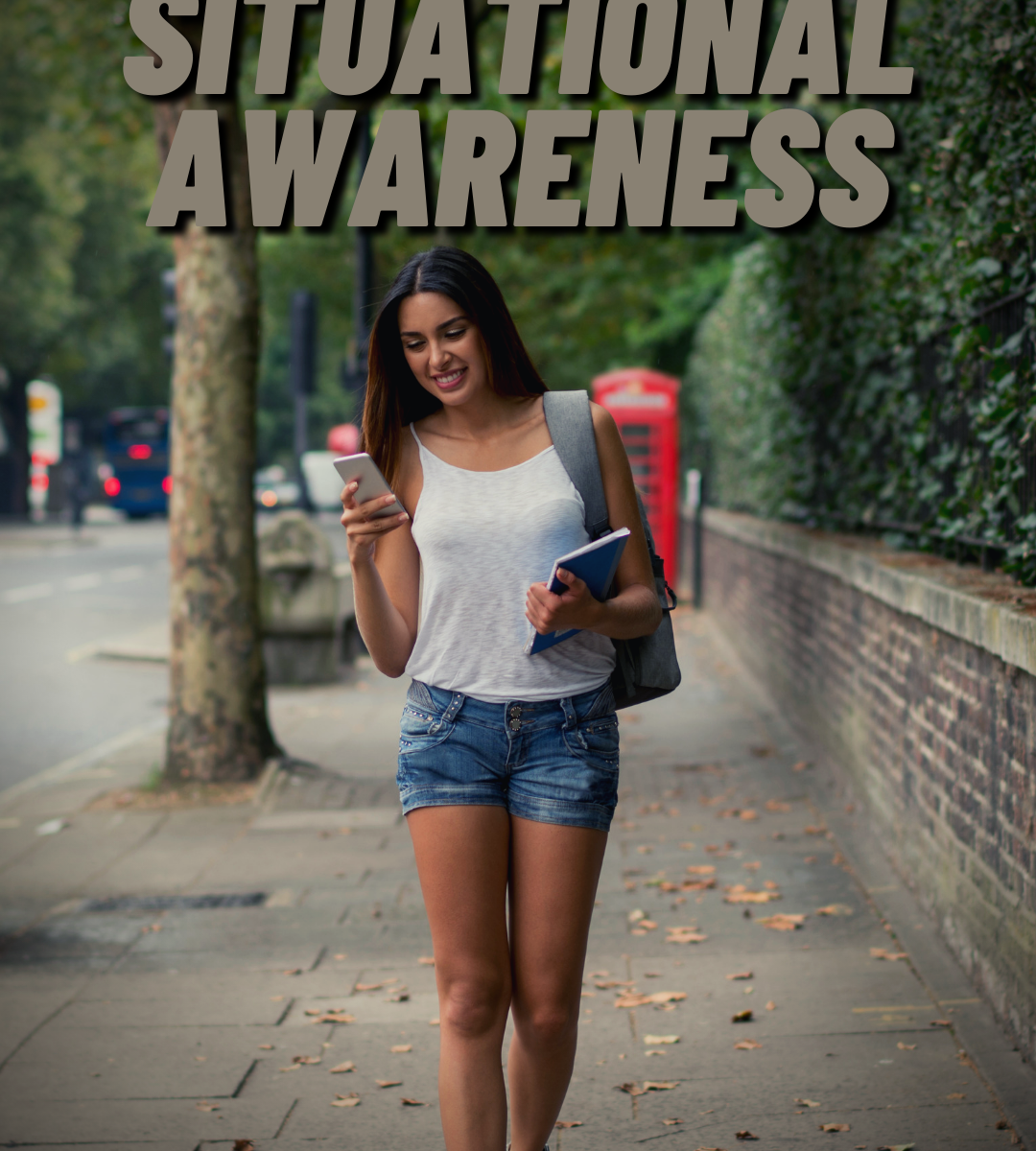The punch you don’t see coming is the one that puts you down.
The basis of good personal security is situational awareness. People have come up with many systems over the years to describe this but they all boil down to knowing what is going on around you. Cell phones and devices are the number one killer of situational awareness today. This means you have to put away your phone, or other devices and actually look at, listen to, feel, and interact with the world around you.
Personally I prefer to use the base line method to explain it to my clients. All it means is that you of learn and understand what the base line is for the area your in (what is normal) and then look for what stands out or rises above that base line. I use this method because it transitions easily to talking about being gray and blending in, except you yourself are trying not to rise above that baseline.
Now as with any new skill it takes practice to learn and do well but then after a while it becomes second nature This is going to be no different.
THE BASICS
A good way to practice is people watching, next time your out to lunch or dinner instead of staring at your phone take look around. If your with your family or friends make a game out of it. How many people are on their phone, what are people wearing, where are they sitting, are there any large groups, who is arguing, who looks like they are having a good time. Notice their clothing, tattoos, and accessories. Observe any mannerisms and how they carry themselves. This gets you in the habit of paying attention to the information in the environment around you.
Take it a step further for a game and ask each other questions about them and try to guess the answers based on what you see. Hobbies, kind of vehicle they drive, stuff along those lines.
Now on to environment, a good place to start is to be aware of exits. Know how many there are, where they are, what could stop you from getting to them, whats your first choice whats your back up? Is there a window you could break to get out if you cant get to an exit? What would you use to break said window?
Now look to see if there is cover close by or just concealment. Cover in this sense is defined as a structure or piece of the environment around you that might stop projectiles. This could be anything from bullets to broken glass depending on the situation. (Hard surfaces like brick, rock, concrete or steel. Wood may only count in certain circumstances like flying glass. Concealment only offers you the ability to hide visually, wood walls, bushes, tinted glass etc. Most cover is concealment but not all concealment is cover.
NEXT STEPS
Now we mentioned blending in before because we don’t want to draw too much attention to our selves in most instances and at this point you might be getting some looks from others who are more aware. When your looking around your probably moving around in your seat a little to much to get a better look around and probably borderline line staring at people. So the next step is not to be so obvious about it.
Start by sitting in your seat like you normally would, now what can you see with out moving? What can you see with only moving your eyes.?
Now back to the people themselves. The next natural progression for training is to study human behavior and body language. When you actually study human behavior instead of just going from your experience or guessing, you be able to more accurately. You will be able to more accurately judge whether the person you’re talking to whose arms are crossed is closed off or just cold, or more importantly if the guy walking towards you on the street is a true threat.
The best book I have found on the subject is The Ellipsis Manual by Chase Hughes. This book goes deeper than just body language but the first section on body language is extensive. It also goes into interacting with people, building rapport, psychological profiling and much more. To go with the book Chase Hughes has a training planner that you takes you week by week on how to teach your self the information in the book in a way that will stick with you.
WEAPONS
Being able to spot weapons can literally be a life saver and is a good next step after learning body language to improving your situational awareness. Now just because you spot a weapon does not mean that person is a threat. Many people other than criminals carry weapons and you need to evaluate the entire situation and person. Almost all states allow concealed carry of a firearm and other weapons both with or with out a permit depending on the state.
Now we will start with firearms, the natural places that people tend to carry firearms are the waist, under the arms and the ankles. So these are the places you want to visually check first. Do you see bulges, are their cloths hanging weird in those areas, do you see something swing or poke out when they move? These may not be weapons but they should clue you into people you might want to pay more attention to.
Now beyond firearms there is a wide range of weapons that you could encounter in your day to day, or your travels but knives are widely carried in a variety of ways world wide. Knives may be harder to spot because they are easier to conceal due to their typically smaller size and lighter weight.
Now you need to understand that just about anything can be used as a weapon, not to mention a persons bare hands. make sure that you learn and pay attention to the body language of the individuals around you and watch for signs of aggression and other red flags.
Sign up for our news letter to receive more in depth information on this topic.

